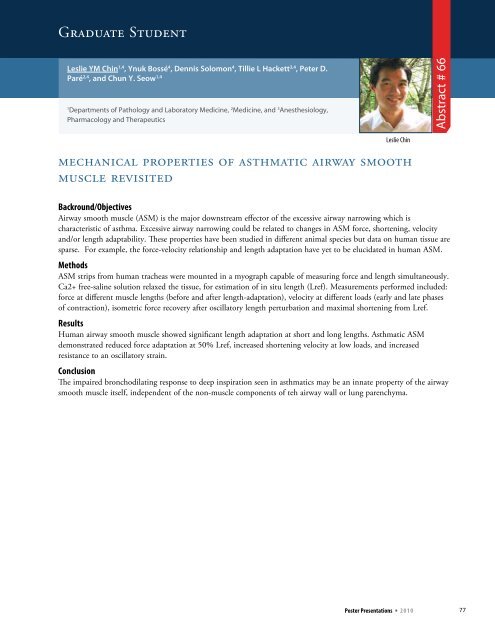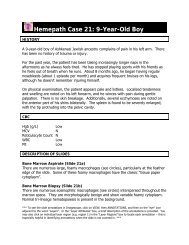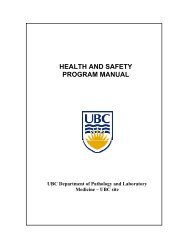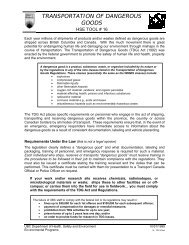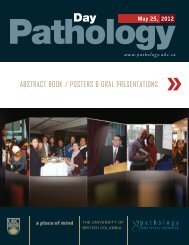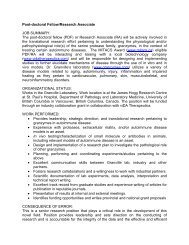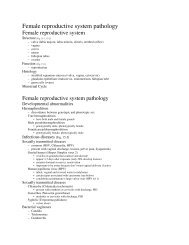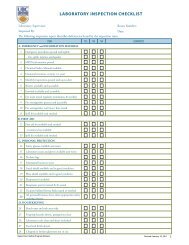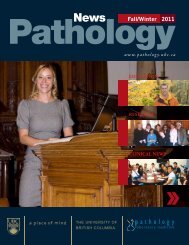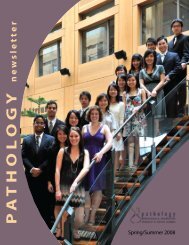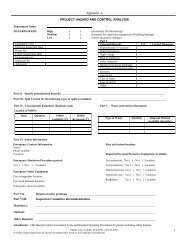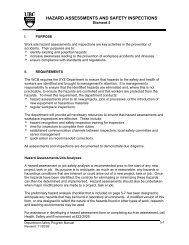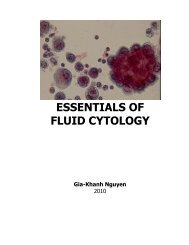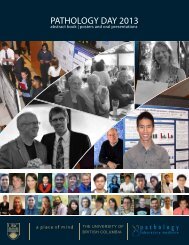Oral Presentations - Pathology and Laboratory Medicine - University ...
Oral Presentations - Pathology and Laboratory Medicine - University ...
Oral Presentations - Pathology and Laboratory Medicine - University ...
Create successful ePaper yourself
Turn your PDF publications into a flip-book with our unique Google optimized e-Paper software.
Graduate StudentLeslie YM Chin 1,4 , Ynuk Bossé 4 , Dennis Solomon 4 , Tillie L Hackett 3,4 , Peter D.Paré 2,4 , <strong>and</strong> Chun Y. Seow 1,41Departments of <strong>Pathology</strong> <strong>and</strong> <strong>Laboratory</strong> <strong>Medicine</strong>, 2 <strong>Medicine</strong>, <strong>and</strong> 3 Anesthesiology,Pharmacology <strong>and</strong> TherapeuticsAbstract # 66Leslie Chinmechanical properties of asthmatic airway smoothmuscle revisitedBackround/ObjectivesAirway smooth muscle (ASM) is the major downstream effector of the excessive airway narrowing which ischaracteristic of asthma. Excessive airway narrowing could be related to changes in ASM force, shortening, velocity<strong>and</strong>/or length adaptability. These properties have been studied in different animal species but data on human tissue aresparse. For example, the force-velocity relationship <strong>and</strong> length adaptation have yet to be elucidated in human ASM.MethodsASM strips from human tracheas were mounted in a myograph capable of measuring force <strong>and</strong> length simultaneously.Ca2+ free-saline solution relaxed the tissue, for estimation of in situ length (Lref). Measurements performed included:force at different muscle lengths (before <strong>and</strong> after length-adaptation), velocity at different loads (early <strong>and</strong> late phasesof contraction), isometric force recovery after oscillatory length perturbation <strong>and</strong> maximal shortening from Lref.ResultsHuman airway smooth muscle showed significant length adaptation at short <strong>and</strong> long lengths. Asthmatic ASMdemonstrated reduced force adaptation at 50% Lref, increased shortening velocity at low loads, <strong>and</strong> increasedresistance to an oscillatory strain.ConclusionThe impaired bronchodilating response to deep inspiration seen in asthmatics may be an innate property of the airwaysmooth muscle itself, independent of the non-muscle components of teh airway wall or lung parenchyma.Poster <strong>Presentations</strong> * 2 0 1 077


